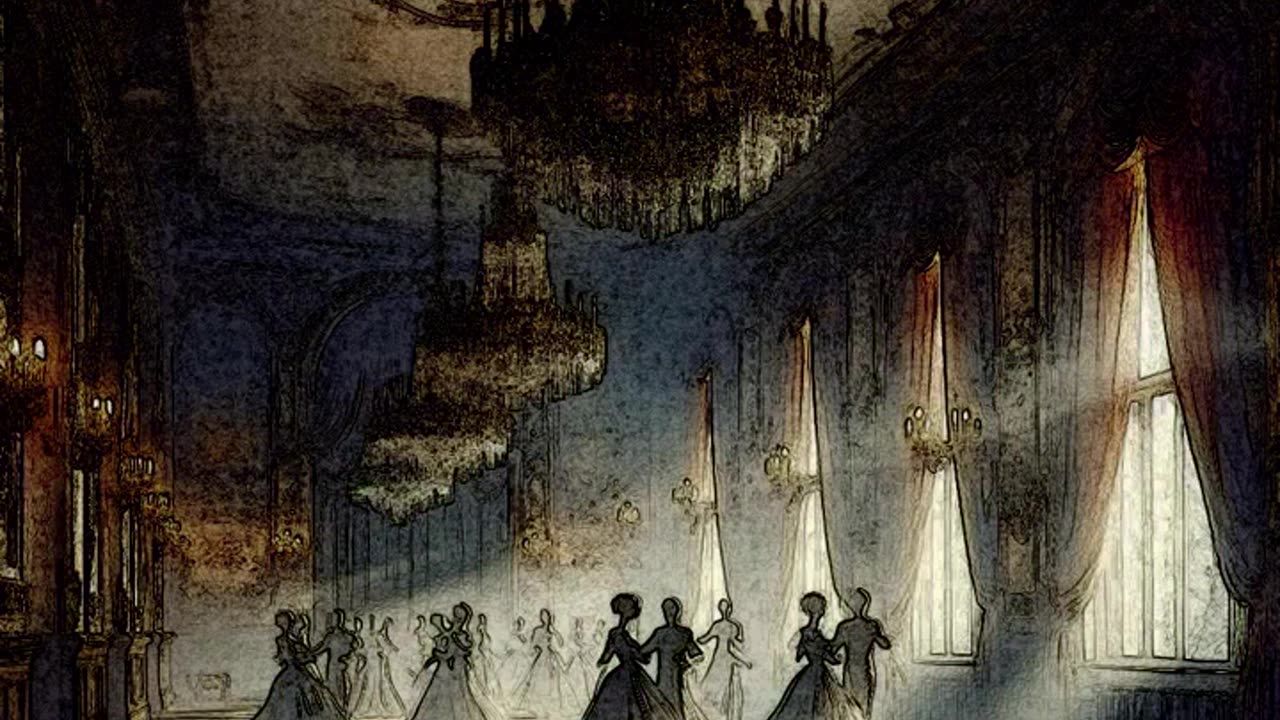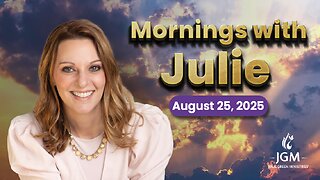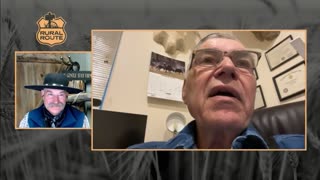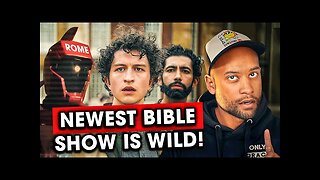Premium Only Content

Unveiling the Dark Side of Danse Macabre, Camille Saint-Saëns: Danse Macabre (the Gruesome Dance)
"Danse Macabre" is one of the most famous works by the French composer Camille Saint-Saëns. Composed in 1874, this tone poem is a vivid musical depiction of the medieval legend of the "Dance of Death" (Danse Macabre), where Death plays his fiddle at midnight on Halloween, summoning the dead from their graves to dance until dawn.
The piece is orchestrated for a full orchestra, with prominent roles for the violin (representing Death’s fiddle), #xylophone (mimicking the sound of rattling bones), and other instruments like the harp, which plays twelve repeated notes to represent the striking of midnight. "Danse Macabre" is structured as a tone poem, meaning it tells a story or paints a picture through music.
The piece begins with the harp playing twelve notes, representing the clock striking midnight. The solo violin, tuned with the E string lowered to E-flat to create a dissonant tritone ("Devil’s interval"), enters with a theme representing Death summoning the dead. The main dance theme, played by various orchestra sections, follows in a lively, eerie rhythm.
The piece features recurring themes that represent different elements of the story. For instance, the main theme is a macabre waltz that evokes the image of skeletons dancing. Throughout the work, Saint-Saëns uses musical motifs to depict the rattling of bones, the eerie atmosphere of the graveyard, and the relentless, hypnotic nature of the dance.
As the piece progresses, the dance becomes more frenzied, culminating in a loud climax. However, just before dawn, the music suddenly becomes calm and quiet, signaling the end of the dance as the #rooster crows (represented by the oboe), and the dead return to their graves.
"Danse Macabre" has become a staple in classical music, especially around #Halloween. It has been arranged for various ensembles and used in films, television, and other media to evoke a spooky or eerie atmosphere. Its memorable themes and vivid orchestration have made it one of Saint-Saëns's most popular works.
Here are some notable films where "Danse Macabre" has been featured:
1. "The Skeleton Dance" (1929)
Description: An early Disney animated short film that features skeletons dancing in a graveyard to the tune of "Danse Macabre." It is one of the first Silly Symphonies produced by Walt Disney.
2. "Hugo" (2011)
Description: Directed by Martin Scorsese, this film uses "Danse Macabre" in one of its scenes, enhancing the magical and mysterious atmosphere of the story set in a Parisian train station.
3. "Tombstone" (1993)
Description: A Western film about the gunfight at the O.K. Corral. "Danse Macabre" is used effectively during scenes that emphasize the grim reality of death in the Old West.
4. "The Halloween Tree" (1993)
Description: An animated TV movie based on Ray Bradbury's novel, where "Danse Macabre" helps set the tone for this spooky, adventurous tale about the origins of Halloween.
5. "The Simpsons"
Description: While not a movie, this popular animated TV series has featured "Danse Macabre" in its Halloween specials, particularly in the "Treehouse of Horror" episodes.
6. "Excalibur" (1981)
Description: In this epic fantasy film directed by John Boorman, "Danse Macabre" is used in the background to underscore the mystical and dark themes of King Arthur's legend.
7. "The Book of Life" (2014)
Description: An animated film that explores Mexican traditions related to the Day of the Dead. "Danse Macabre" is used as part of the film's score to enhance its themes of life, death, and celebration.
Saint-Saëns's "Danse Macabre" is a masterpiece of orchestral storytelling, blending technical brilliance with vivid, evocative imagery to create a piece that is both musically rich and atmospherically compelling.
#sinister sounds, #phantom sounds, #orchestral spookiness, #orchestra spookfest, #gothic compositions, #fright night music, #eerie strings, #classic horror, #Violin Solo, #Tone Poem, #Symphony Orchestra, #Spooky Music, #Saint-Saëns Danse Macabre, #Romantic Era Music, #Orchestral Music, #Halloween Music, #Halloween Classical, #French Composer, #Death Fiddle, #Danse Macabre Analysis, #Danse Macabre, #Dance of Death, #Classical Masterpiece, #19th Century MusicClassical
Camille Saint-Saëns: Danse Macabre by Kevin MacLeod is licensed under a Creative Commons Attribution License.
Source (Free Music Archive) and license type (CC BY)
-
 1:14:57
1:14:57
JULIE GREEN MINISTRIES
2 hours agoRUSSIA IS ABOUT TO RELEASE SOMETHING THAT WILL CRUSH THE ESTABLISHMENT
33.8K113 -
 LIVE
LIVE
GritsGG
41 minutes agoWin Streaking! Coloring Hair @11AM PST~ Most Wins 3435+ 🧠
41 watching -
 LIVE
LIVE
Welcome to the Rebellion Podcast
19 hours agoMonday Funday - WTTR Podcast Live 8/25
335 watching -
 1:21:24
1:21:24
Game On!
15 hours ago $0.02 earnedTom Brady And The Las Vegas Raiders ARE BACK! 2025 NFL Preview!
23.9K1 -
 LIVE
LIVE
The Bubba Army
2 days agoShould RaJa Jackson Be Arrested? - Bubba the Love Sponge® Show | 8/25/25
2,088 watching -
 LIVE
LIVE
FyrBorne
14 hours ago🔴Warzone M&K Sniping: Builds So Strong They Think I'm Hacking
293 watching -

BEK TV
2 days agoTrent Loos in the Morning - 8/25/2025
19.9K -
 4:23
4:23
Blackstone Griddles
17 hours agoEasy Salmon Dinner on the Blackstone Griddle
36K2 -
 8:10
8:10
WhaddoYouMeme
1 day ago $0.08 earnedChristians, Before You See “Testament”, Watch this!
13.5K5 -
 8:42
8:42
Freedom Frontline
15 hours agoDurbin’s Trump Smear Video Just HUMILIATED Him in the Senate
20K8